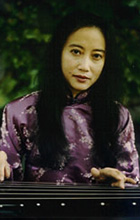Related Essays
The Qin Zither: Solo Music of the Literati

In contrast to the noise and bustle created by other folk instruments, the seven-string plucked zither known as the qin (or guqin) has an intimate feel and a prestige that far outweighs its tiny minority of players. In ancient China the qin was an essential component of the culture of the imperial literati, along with chess, calligraphy, painting, kunqu opera, and the pipa, or plucked lute. The qin’s scholarly detachment and union with nature have made it a favorite subject of poets and painters for over 1,000 years. Though still studied by conservatory students as well as amateurs, it can most typically be found at gatherings of aficionados, who take turns playing while sipping fine tea and admiring paintings, calligraphy, and exquisite old instruments. In recent years the qin has gained a new global life in concerts, CDs, films, and on the internet, and new players have emerged to replace the generation of older masters who kept the qin alive through the troubled years of Maoism.
The structure of the instrument has changed little during the past 2,000 years; however, the majority of works performed on it today date back only a few centuries. The contrast in timbre created by such effects as open strings, stopped pitches, expressive slides, and ethereal harmonics creates a mesmerizing soundscape: The ebb and flow of free tempo often confounds any sense of metre. Though soft in dynamic, the qin is capable of a wide range of expression: In addition to meditative, it can sound zany, inebriated, or even violent. Notation, otherwise of minor importance in most Chinese genres, has a long tradition in the case of the qin, which requires a complex system of tablature.



